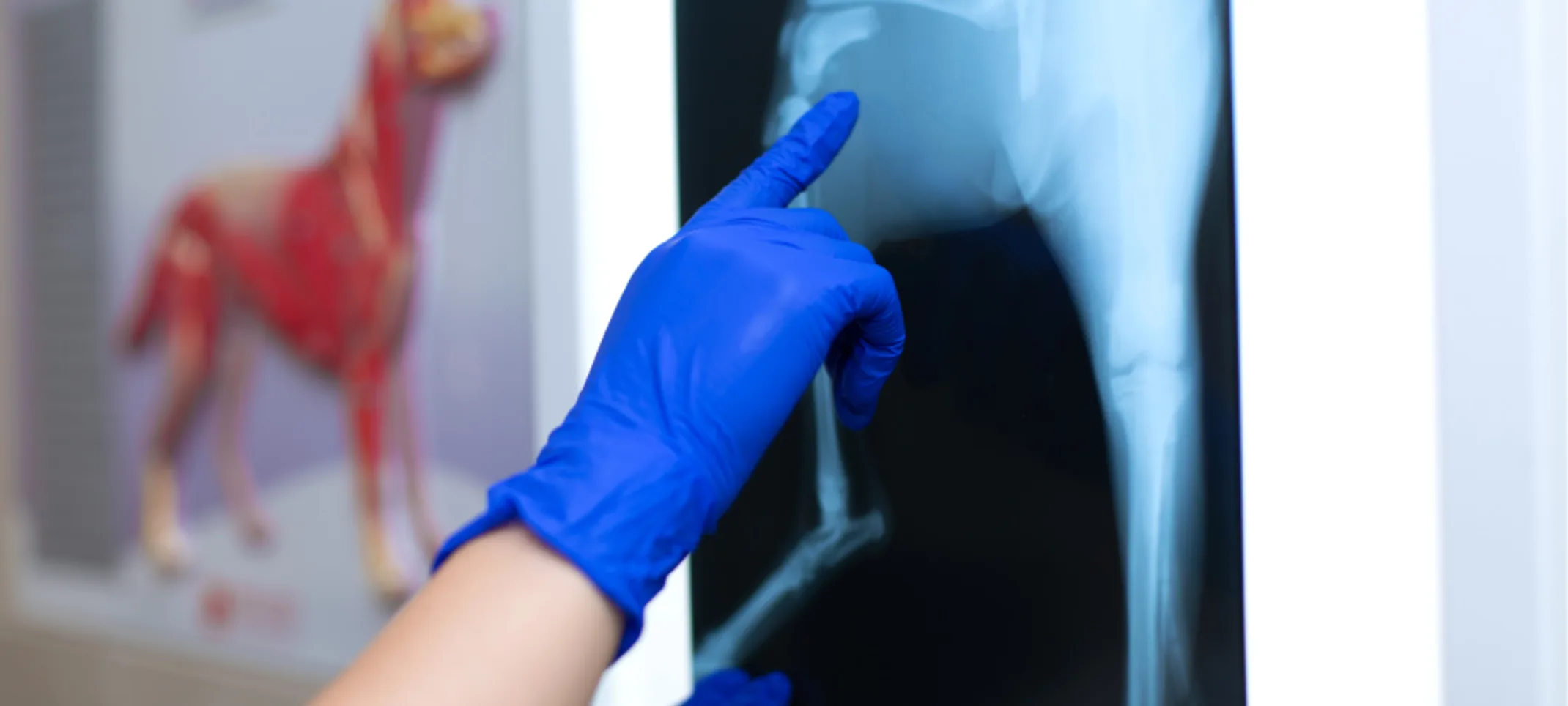Las Posas Veterinary Medical Center
Radiography
We’re equipped to perform routine radiography services to identify many types of illness or injury when pets are sick or suffer a trauma.

Overview
Radiography, also known as X-rays, is one of the most common and valuable medical diagnostic tools. X-rays are highly useful for screening areas of the body that have contrasting tissue densities, or when evaluating solid tissues. One of the diagnostic tools we use frequently when determining what may be wrong with your pet is radiology, which is when an X-ray beam is used to produce a film or digital image called a radiograph. This can allow us to identify the specific cause of your dog’s or cat’s problem or at least rule out a list of possible causes for the symptoms he or she may be experiencing. We may also take radiographs of your pet as part of a wellness exam to detect any potential problems before they become more serious (such as evaluating for hip dysplasia).
Radiographs provide valuable information about a pet’s bones, joints, abdominal organs (liver, spleen, gastrointestinal tract, kidneys/bladder and uterus/prostate) and cardiovascular system (heart and lungs). Sometimes it is necessary to give a contrast agent to allow us to better visualize the intestinal tract or urinary tract. A common example of using a contrast agent is to diagnose the presence of an intestinal foreign body that is not readily visible on a routine survey radiograph (such as a sock or portion of a toy that has been swallowed).
Radiology is commonly used in conjunction with other diagnostic tools such as ultrasound or more advanced imaging technologies (i.e., MRI, CT). Each one of these imaging tools provides a different interpretation of the particular part of the body we are trying to evaluate.
We are proud to offer digital radiology (X-ray images that are captured digitally rather than on film). This state-of-the-art technology allows us to provide a much more detailed image while exposing your pet to less radiation than traditional radiographs. Additionally, this allows us to be significantly more environmentally friendly by eliminating the hazardous chemicals used when developing traditional X-ray film.
To get the best quality radiograph, your pet needs to remain completely still while the X-ray is taken. In some cases, this may require us to sedate your pet to get the highest quality image and prevent any unnecessary discomfort to him or her.
We also utilize a separate digital dental X-ray system to evaluate your pet’s dental health when needed, which can be invaluable in determining if a diseased tooth can be saved or needs to be extracted to prevent further dental disease.
If you have any questions about our radiology service or what to expect during your pet’s procedure, please contact us.
